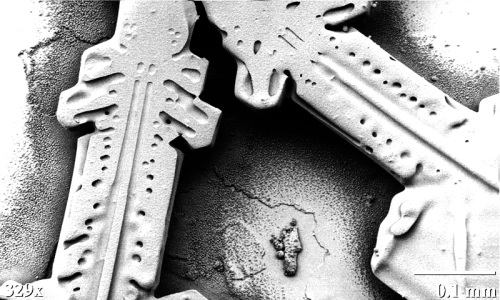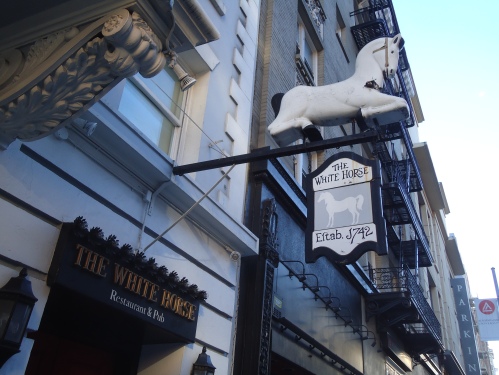
Multnomah County Library event (Portland, Oregon)
“There is no public spectacle without violence to the spirit.”
“What they long to see, what they dread to see,—neither has anything to do with them; their love is without reason, their hatred without justice.”
-Tertullian
COMMENTARY:
“Poetry is the Flavor of Unity.” Think on this phrase for a moment—mull over the complete lack of sense of this arbitrary aggregation of buzz words, and answer me this: is this what is meant to pass for poetic theory these days, and is poetry itself meant to consist of nothing more than any and every odd combination of unrelated word-beads strung upon whatever ratty length of syntactic twine just happens to be lying around?
I will make it easy on you. Here is the formula for the nullity of all poetry in the Simulation, which is the same as that of its universal affirmation: Poetry is, in all instances and in whatever form it may take, 1) uplifting, 2) empowering, and 3) profound, simply by virtue of being “poetry,” and if it is produced by the officially sanctioned officers of reality-hegemony (read Poet Laureates, et al.), it is great poetry.
ALGEBRAIC ANALYSIS:
A listing of terms and their possible combinations.
Poetry.
Flavor.
Unity.
Poetry is the flavor of unity.
Poetry is the unity of flavor.
Flavor is the poetry of unity.
Flavor is the unity of poetry.
Unity is the poetry of flavor.
Unity is the flavor of poetry.
Assuming repetition is not allowed, then take the example of xyz, with x equaling poetry, y equaling flavor, and z equaling unity. Now, for x we have 3 possibilities. For y we cannot use the number already used for x so (3–1) = 2 possibilities. For z we cannot use the number already used for x and y so we are left with (3–2) = 1 possibility. So the total 3-digit number possibilities without repetition is 3x2x1 = 6.
Represented numerically, the possibilities are: 123, 132, 213, 231, 312, and 321.
We can also make our calculation through permutation:
nPr = n! / (n-r)!
Now, we have to form a 3 digit number, so r=3. We have 3 numbers available, so n=3. So,
3P3 = 3!/ (3–3)! = 3x2x1 / 0! = 6 /1 = 6.
Or if you have an instance of required outcome = available resource, as in our case, in which both the required number = 3 and the available digits = 3, we can use directly
3! = 3x2x1 = 6
FINAL THOUGHTS:
Poetry is, indeed, a dying language, because it is increasingly and perpetually being systematically and subtly character-assassinated by the black magick algorithms of the Ghost in the Culture Machine.
Poetry is, indeed, never a dead language, because, luckily for us who still care, it is a disembodied spirit, and therefor incapable of physical death as we understand the concept.























 Though Babylon seems far now, at times, we must remember that it is everywhere. Still, here the air is thicker with oxygen and lighter on the syntaxes of abomination propped up by flimsy & counterfeit silicon birthrights, available to all for the price of nothing more than a bowl of GMO pottage. Now when I look skyward, I no longer see the faces of the Goddesses, those shadowy masks all puffed up with the pride of the entrepreneur, yet still cognizant enough of their own baseness to never show their true forms outright.
Though Babylon seems far now, at times, we must remember that it is everywhere. Still, here the air is thicker with oxygen and lighter on the syntaxes of abomination propped up by flimsy & counterfeit silicon birthrights, available to all for the price of nothing more than a bowl of GMO pottage. Now when I look skyward, I no longer see the faces of the Goddesses, those shadowy masks all puffed up with the pride of the entrepreneur, yet still cognizant enough of their own baseness to never show their true forms outright. Theirs is a landscape of esoteric brushstrokes lambasted onto the blank surface of the glorious, honest mundane. The effect is quite garish to those who have worked at strengthening the intuition by the simple and oft-repeated exercise of looking around at the world, rather than simply turning left or right at every one of the prescribed road signs one sees along life’s neatly planned & immaculately maintained picture-postcard highway system.
Theirs is a landscape of esoteric brushstrokes lambasted onto the blank surface of the glorious, honest mundane. The effect is quite garish to those who have worked at strengthening the intuition by the simple and oft-repeated exercise of looking around at the world, rather than simply turning left or right at every one of the prescribed road signs one sees along life’s neatly planned & immaculately maintained picture-postcard highway system.
 There were also quiet places, places of simple contentment, and sometimes we found one nestled away in an unlikely spot, and there would be an old woman playing piano in the half-light like a melancholy, soft weeping for all that we have lost, nay, impulsively given away whenever our minds became unnavigable with obstructions and we desired a surcease of our painful conceptions. On the wall beyond a lily-embellished balustrade, perceptible only as the candlelight chanced to dance its way through the open spaces, I spied a coat of arms and, pointing it out to my companion, we were reminded that there would be a bill to pay at the close of evening.
There were also quiet places, places of simple contentment, and sometimes we found one nestled away in an unlikely spot, and there would be an old woman playing piano in the half-light like a melancholy, soft weeping for all that we have lost, nay, impulsively given away whenever our minds became unnavigable with obstructions and we desired a surcease of our painful conceptions. On the wall beyond a lily-embellished balustrade, perceptible only as the candlelight chanced to dance its way through the open spaces, I spied a coat of arms and, pointing it out to my companion, we were reminded that there would be a bill to pay at the close of evening.




